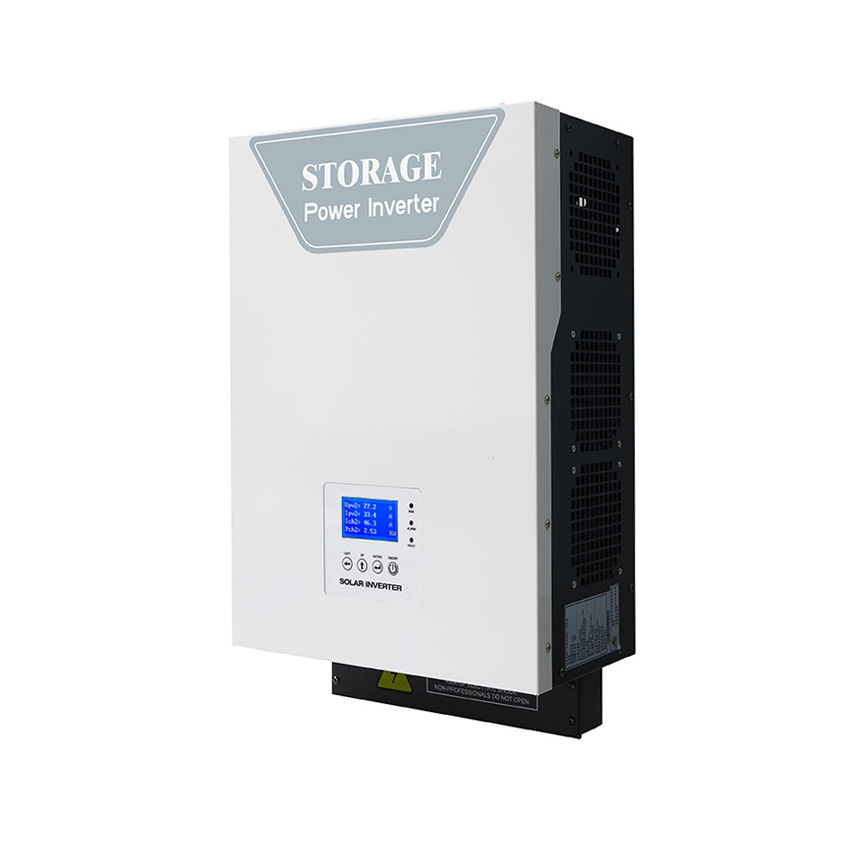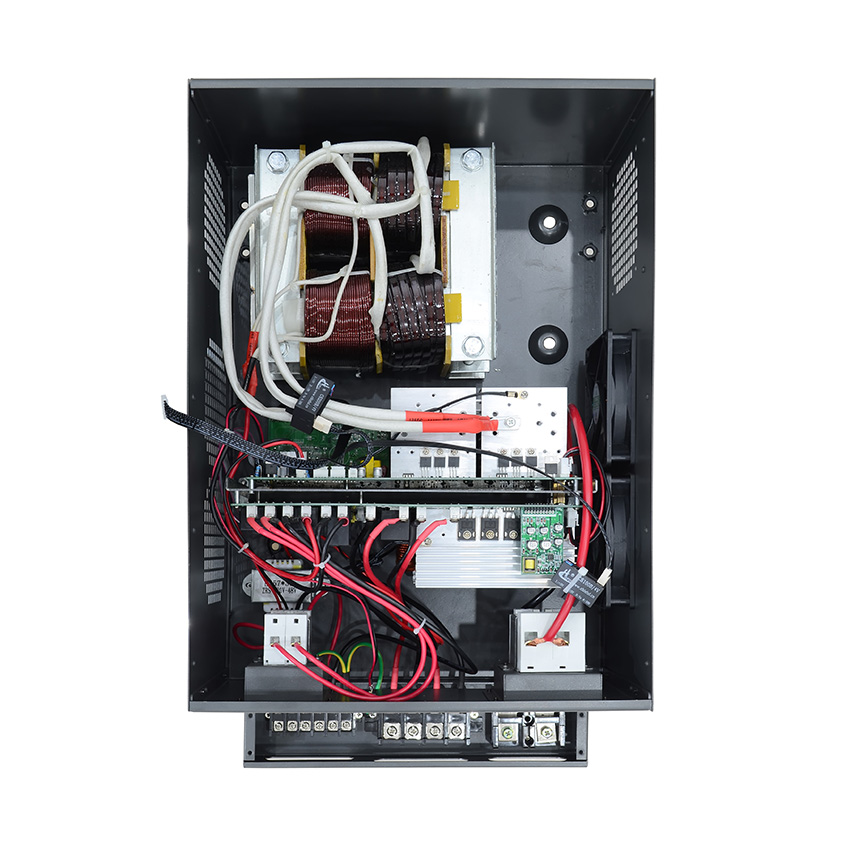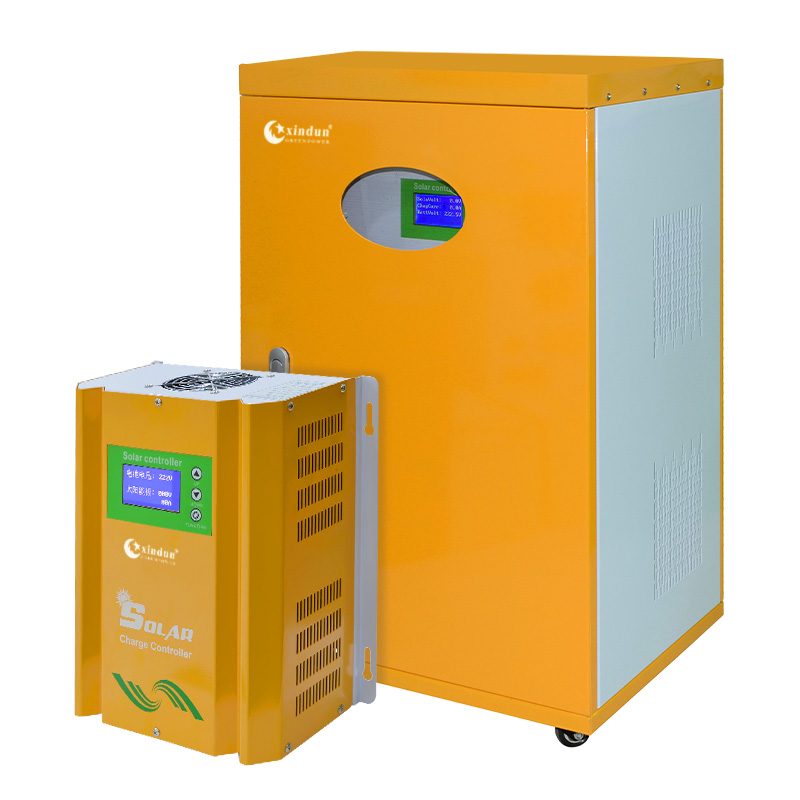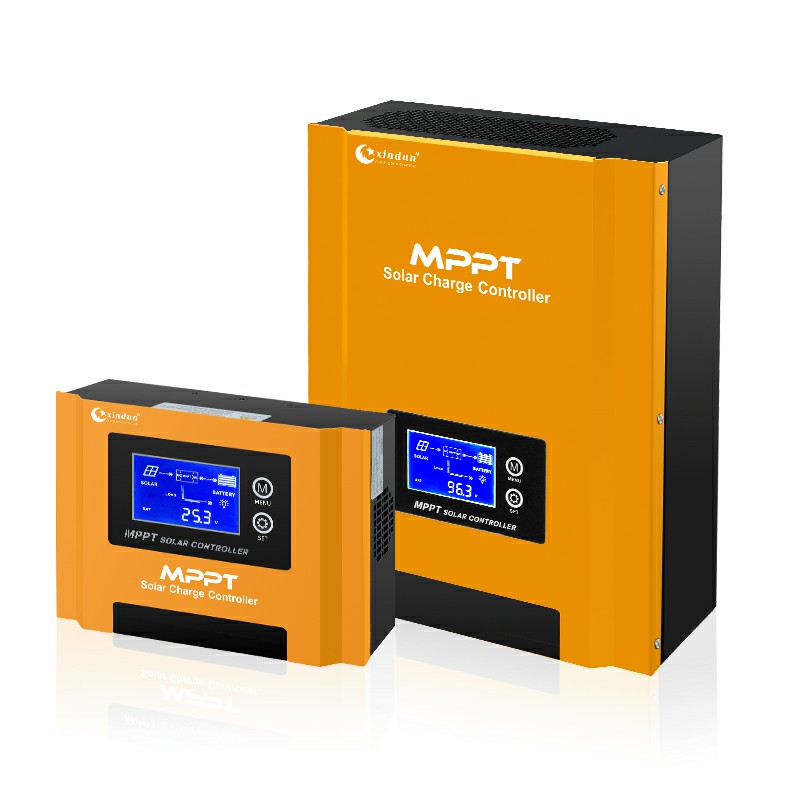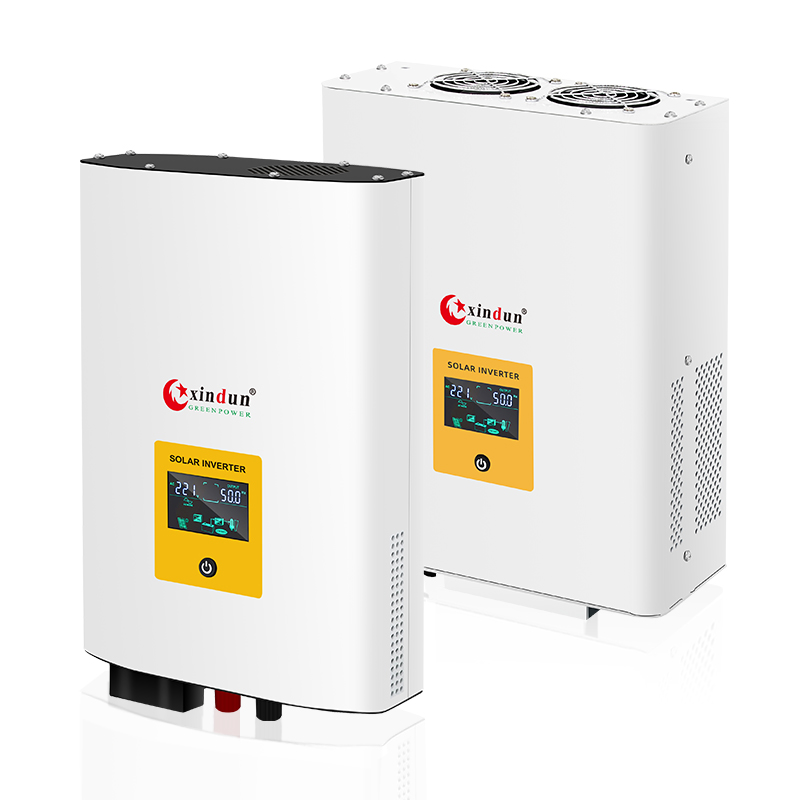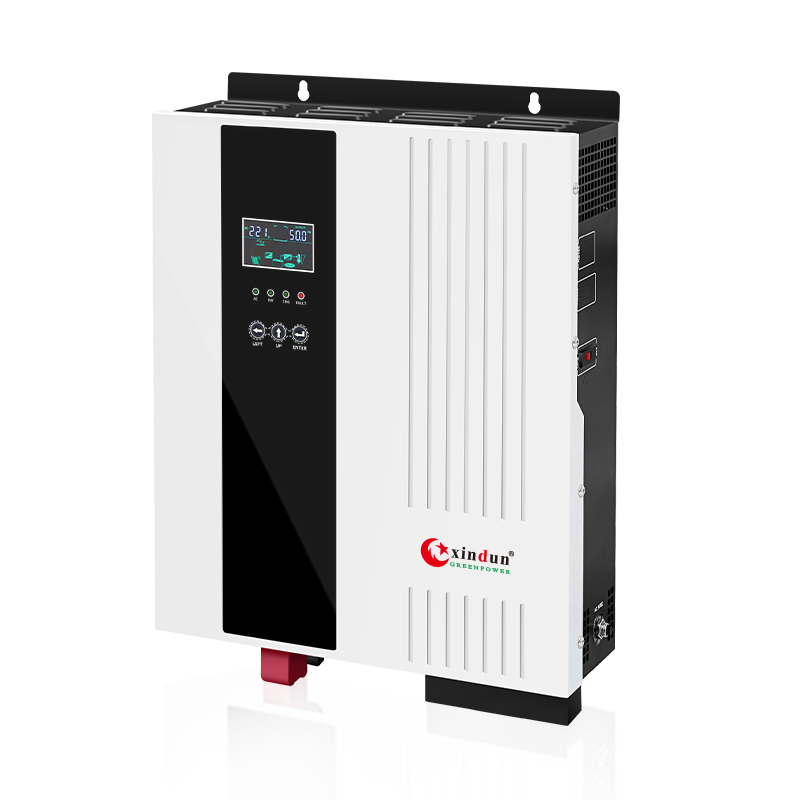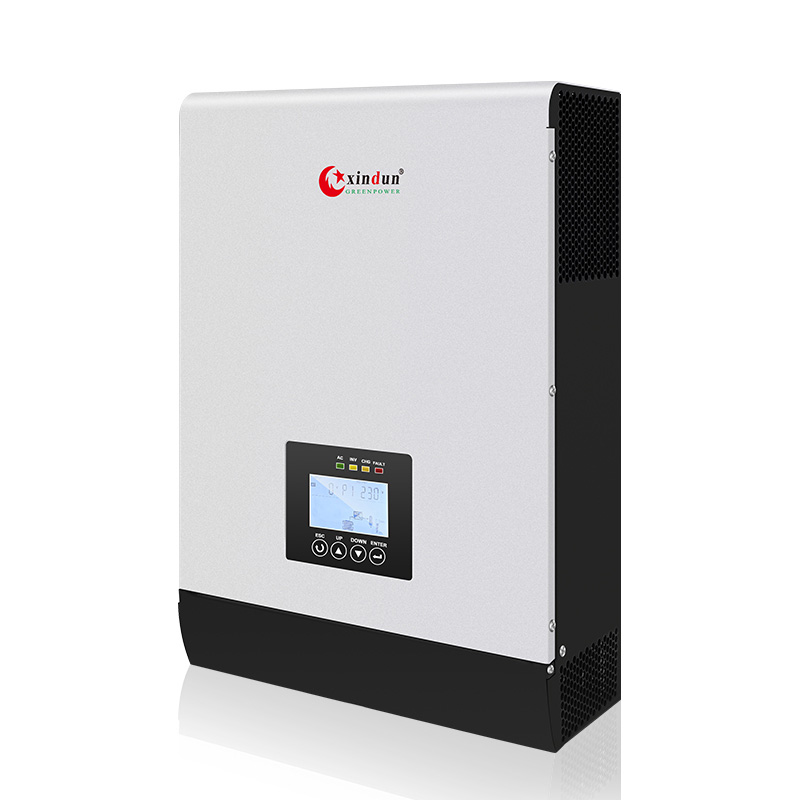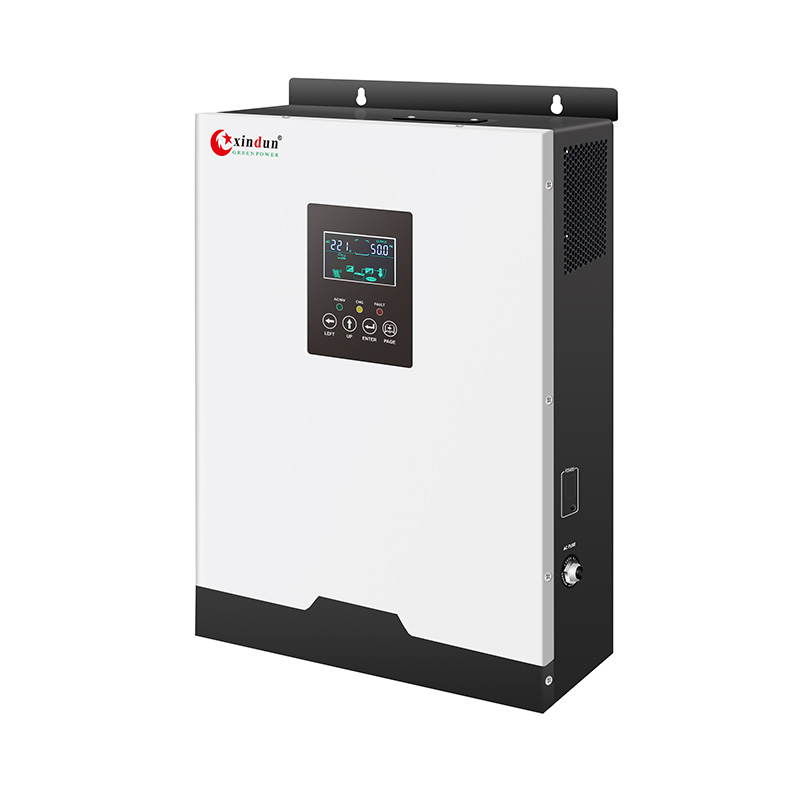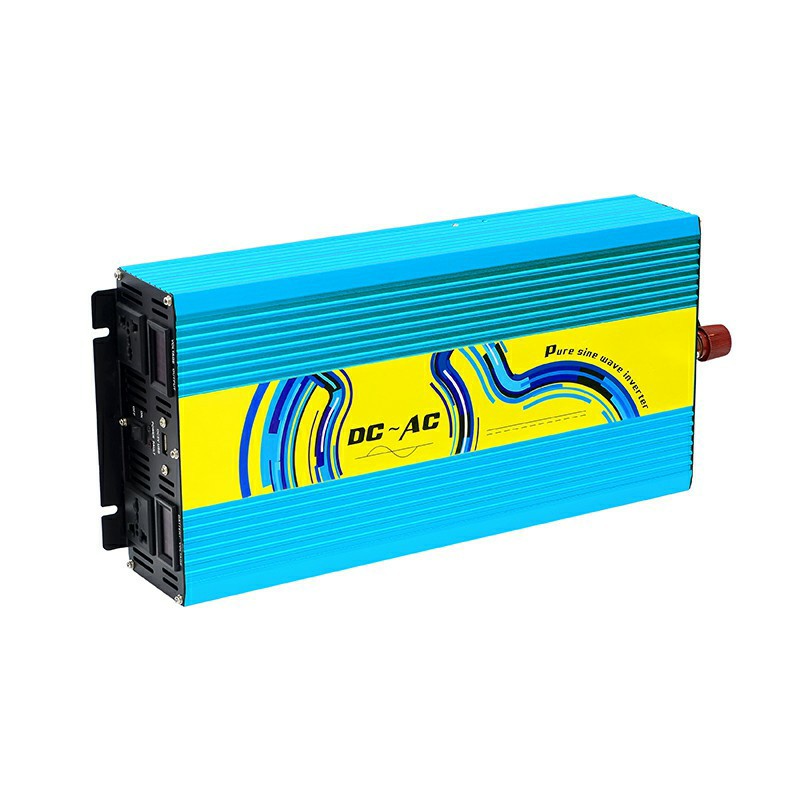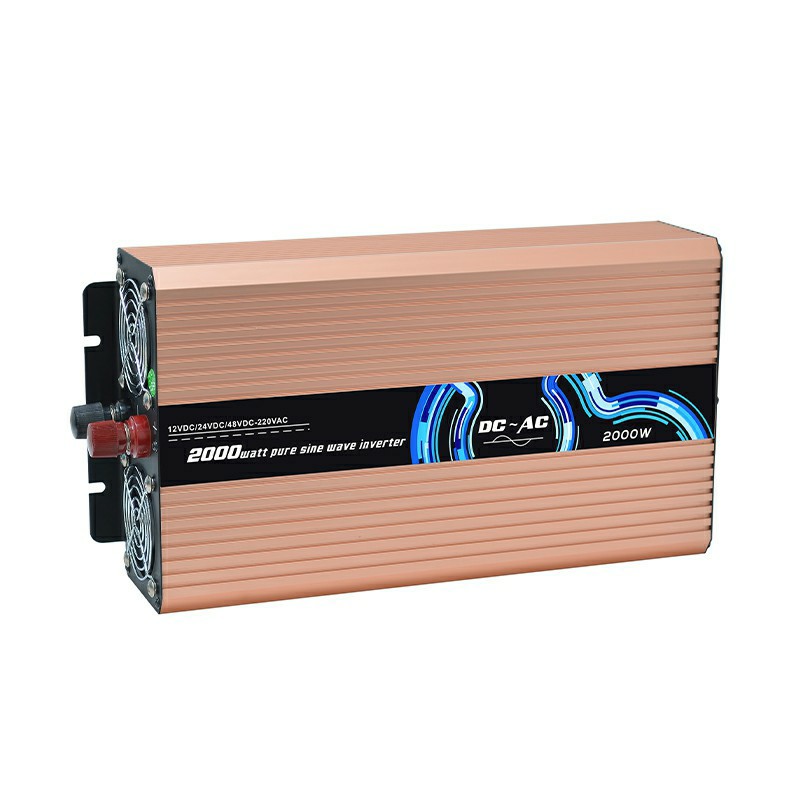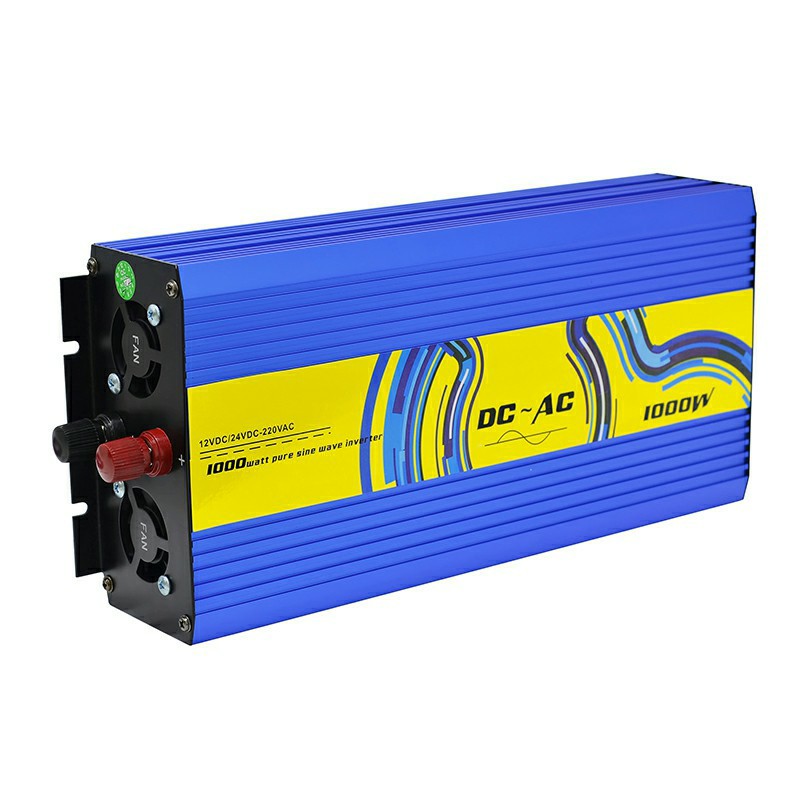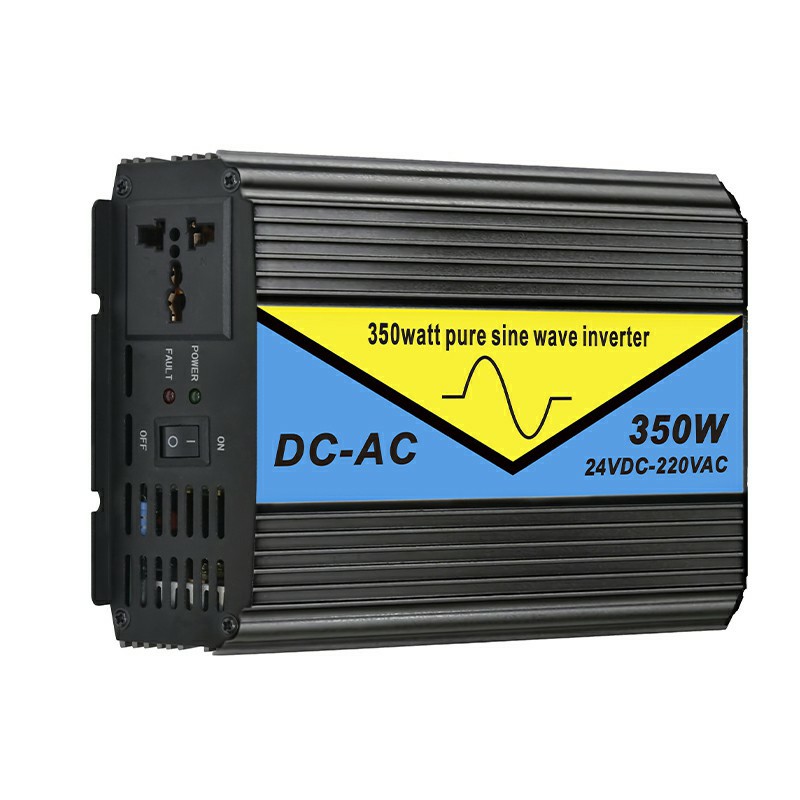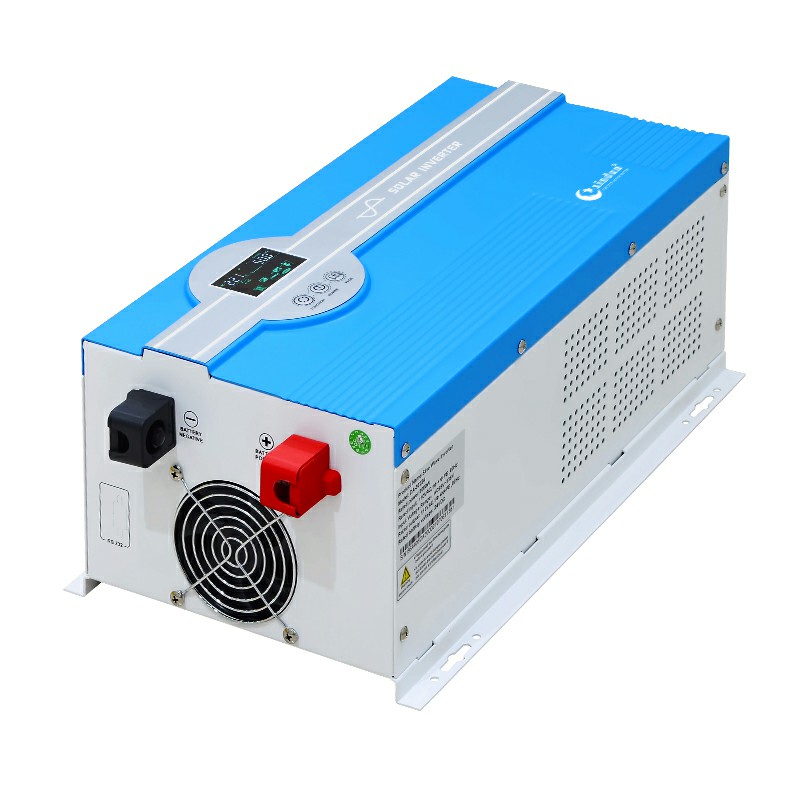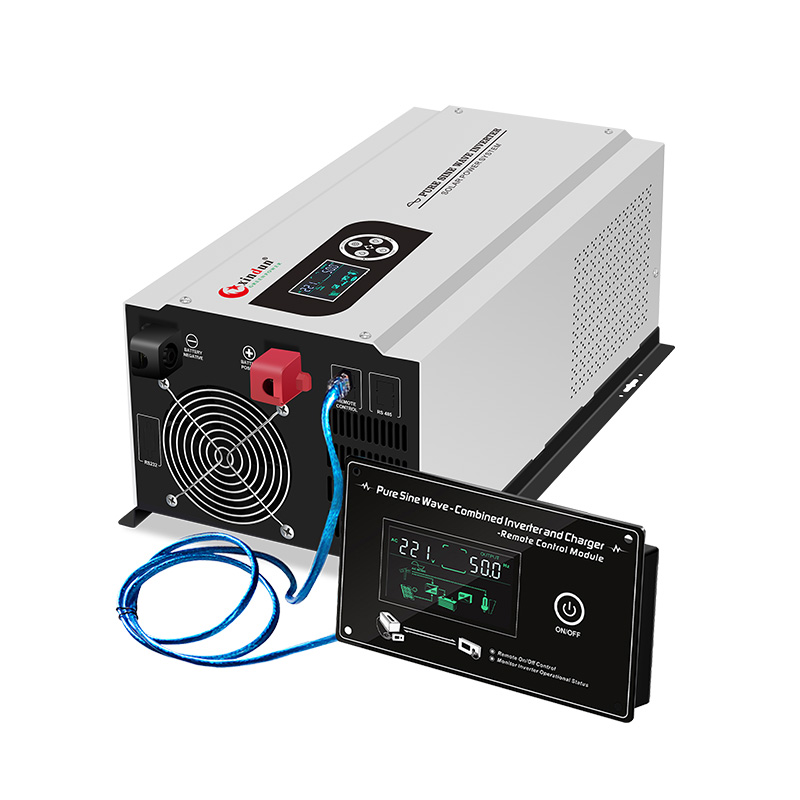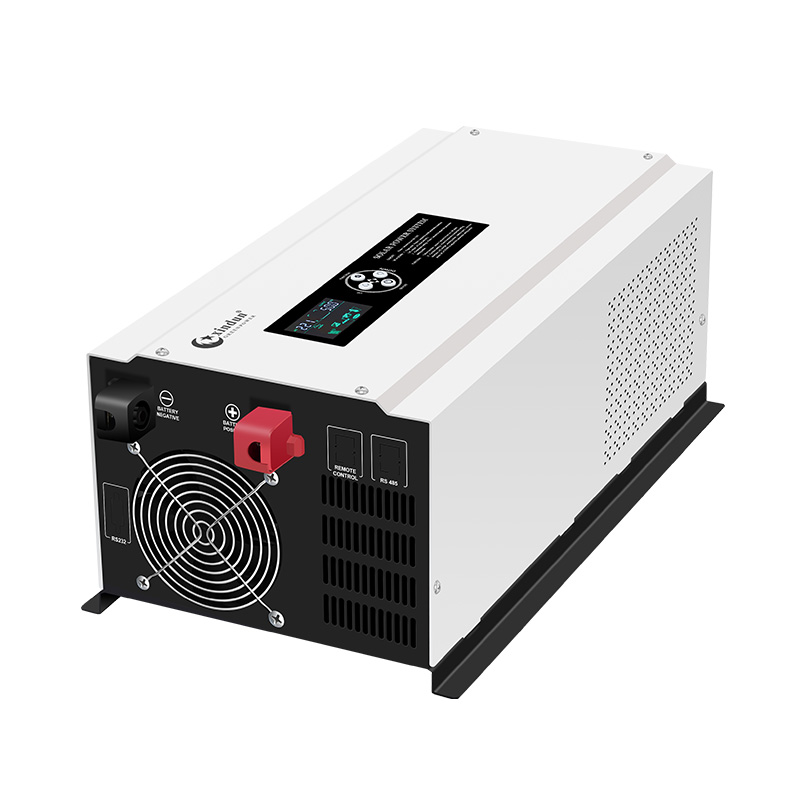Guangdong Xindun Power Technology Co.,Ltd.
Tel./Whatsapp/Wechat: +86 18924874907
E-mail: sales@gdxindun.com
Add: 3/F,Bldg.3,area C,European Industry Park,Chancheng Dist,Foshan,Guangdong,China
|
Purchasing Hotline:+86 18924874907
Product Description
Solar On/Off grid energy storage inverter uses PV energy as priority.When the energy of PV is not enough, it can be supplemented by city power or batteries.When the PV energy is surplus, the battery is stored or accessed on the grid to maximize the utilization of PV power generation, so as to achieve the purpose of self-use,and extra power consumption. In addition, according to different customer’s requirements, peak and valley time periods can be set up to achieve peak-to-peak and valley-filling, reduce grid pressure, and maximize revenue. In the event of a power grid failure, solar energy can continue to generate electricity and switch to off-grid mode to continue to supply power to the load.
ES On/Off Grid Storage Inverter
| 01 | Pure sine wave inverter integrating on-grid and off-grid. | | 02 | Cut peaks and fill valleys function to reduce grid pressure and maximize profits. | | 03 | When the mains fails, the inverter automatically switches from the on-grid mode to the off-grid mode. The solar energy continues to generate electricity to the load, and the remaining solar energy is stored in the battery. | 04
| Inverter inbuilt dual MPPT solar controller (tracking range 60V-150V), precise algorithm, efficient and full use of solar energy. | | 05 | Both solar energy and mains can charge the battery, 3-stage/2-stage charging technology to protect battery life. Battery types optional (lead-acid, lithium-ion, custom battery). | | 06 | Under the state of mains and solar energy, the inverter can start automatically. | | 07 | Large LCD screen, operating parameter could be displayed in real time. | | 08 | Multiple communication ports and remote controls optional (RS232\RS485\Mobile APP\SNMP\GSM) | | 09 | The mains supply the load, the inverter loss is 0, the solar and the battery supply the load, and the inverter loss is less than 10%. |
| AC Modes | 1 When the mains power is normal and the current solar power generation is bigger than the load power, solar power will feed the load completely and the surplus solar power will feed the battery and transmit to the grid.
2 When mains supply is normal and the solar power is smaller than the load power, the insufficient part is supplemented by the mains supply; The solar and the mains supply feed the load together.
3 When mains supply is abnormal, the inverter changes to independent invert mode. When the solar power is bigger than the load power, the solar power will feed the load completely, and the surplus part will charge the battery. When the solar
power is smaller than the load power, the insufficient part is supplemented by the battery; the batteries and the solar feed the load together.
4 When solar has no generating power, the mains supply will charge and store energy to the battery through the inverter.
5 When mains supply is abnormal and there is no solar, batteries will feed the load. |
| Battery Modes | 1 When the mains power is normal and the current solar power generation is bigger than the load power, solar power will feed the load completely and the surplus solar power will feed the battery and transmit to the grid.
2 When the solar power is smaller than the load power, the insufficient part is supplemented by the battery. The solar and the battery will feed the load together.
3 When solar power runs out or very little and the battery is placed to below 48 voltage, the discharge power of the battery will be linearly reduced. The insufficient part will be supplemented by mains supply. And when it reaches the low-voltage protection of the battery, the load will be completely fed by the mains supply .
4 When mains supply is abnormal, the inverter will work in the independent invert mode. The solar power will feed the load. And if the solar power is insufficient, it is supplemented by the battery.
Note: under the BATT mode, if there is no solar, mains supply won’t charge the battery. |
| Peak-cutting and Valley-filling of power-using Mode (This mode needs to work in battery priority mode) | This mode is suitable for the areas which have peak and valley electricity price. According to the electricity price in different periods, the corresponding time can be set to charge and discharge from the grid.
1 When the electricity price is low, mains supply charges the batteries;
2 When the electricity price is high, the batteries feed the loads.
|
| Parameters | | Model: ES | 3KW | 5KW | | PV Input | Max input voltage(At 25℃) | 150V | | MPPT tracking range | 60V~120V(Recommend: The open circuit voltage should be less than 120V) | | MPPT route number | 2 | | Max input power | 1960W/1960W | 3360W/3360W | | Battery | Type of battery | Lead-acid battery / Lithium-ion battery | | Rated voltage | 48V | Max charging current
(Can be set,Recommended 0.1C) | 70A(PV)/35A(Mains) | 120A(PV)/60A(Mains) | | Float voltage(Can be set) | 55.2V | | Charge voltage(Can be set) | 56.8V | | Charging method | 3-stage/2-stage | | AC Input | Rated voltage | 220V/230V | | Input voltage range | 187V~264V | | Rated input frequency | 50Hz/60Hz±5Hz | | Islanding Protection | ≤2S | | Reconnection time | 30S | AC output
(off grid mode) | Rated output power | 3KW | 5KW | | Rated output voltage | 220V/230V | | Output voltage accuracy | 2% | | Rated output frequency | 50Hz/60Hz | | Output frequency accuracy | 1% | AC output
(on grid mode) | Rated output power | 3KW | 5KW | | Rated output current | 13.6A | 22.7A | | Output voltage | 187V~264V | | Output frequency | 47~52Hz/57~62Hz | | Power Factor | >0.99(Rated power) | | Protection | Output short circuit | YES | | Over load | YES | | Over-voltage/under-voltage | YES | | Over-frequency/under-frequency | YES | | Over temperature | YES | | Island protection | YES | | Regular Parameter | Topology | Transformer isolation | | Protection level | IP20 | | Display | LCD+LED | | Operating temperature | -10℃~60℃(Derating above 45°C) | | Storage temperature | -20℃~60℃ | | Noise | ≤60dB | | Relative humidity | 0%~95%(No condensation) | | Highest altitude | 2000m(More than derating) | | Machine dimension(L*W*Hmm) | 592*380*265 | | Package dimension(L*W*Hmm) | 650*435*290 | | N.W(kg) | 36 | 45 | | G.W(kg) | 40 | 49 | | Installation Method | Wall-Mounted | | Note: All specifications are subject to charge without prior notice |
Inverter in Solar Power System
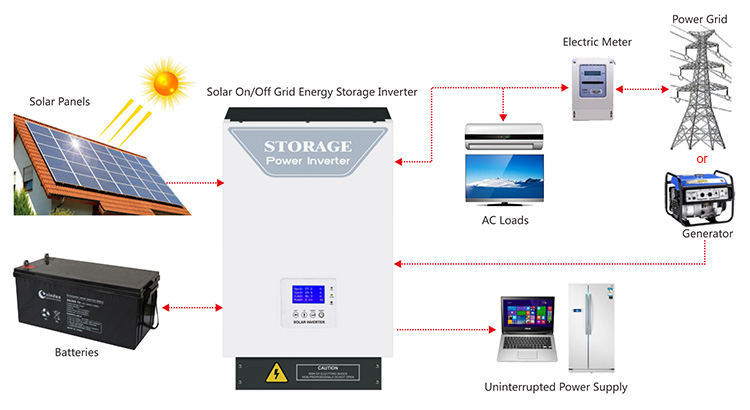

Product Description
Solar On/Off grid energy storage inverter uses PV energy as priority.When the energy of PV is not enough, it can be supplemented by city power or batteries.When the PV energy is surplus, the battery is stored or accessed on the grid to maximize the utilization of PV power generation, so as to achieve the purpose of self-use,and extra power consumption. In addition, according to different customer’s requirements, peak and valley time periods can be set up to achieve peak-to-peak and valley-filling, reduce grid pressure, and maximize revenue. In the event of a power grid failure, solar energy can continue to generate electricity and switch to off-grid mode to continue to supply power to the load.
◆ Pure sine wave inverter integrating on-grid and off-grid.
◇ Cut peaks and fill valleys function to reduce grid pressure and maximize profits.
◆ When the mains fails, the inverter automatically switches from the on-grid mode to the off-grid mode. The solar energy continues to generate electricity to the load, and the remaining solar energy is stored in the battery.
◇ Inverter inbuilt dual MPPT solar controller (tracking range 60V-150V), precise algorithm, efficient and full use of solar energy.
◆ Both solar energy and mains can charge the battery, 3-stage/2-stage charging technology to protect battery life. Battery types optional (lead-acid, lithium-ion, custom battery).
◇ Under the state of mains and solar energy, the inverter can start automatically.
◆ Large LCD screen, operating parameter could be displayed in real time.
◇ Multiple communication ports and remote controls optional (RS232\RS485\Mobile APP\SNMP\GSM)
◆ The mains supply the load, the inverter loss is 0, the solar and the battery supply the load, and the inverter loss is less than 10%.
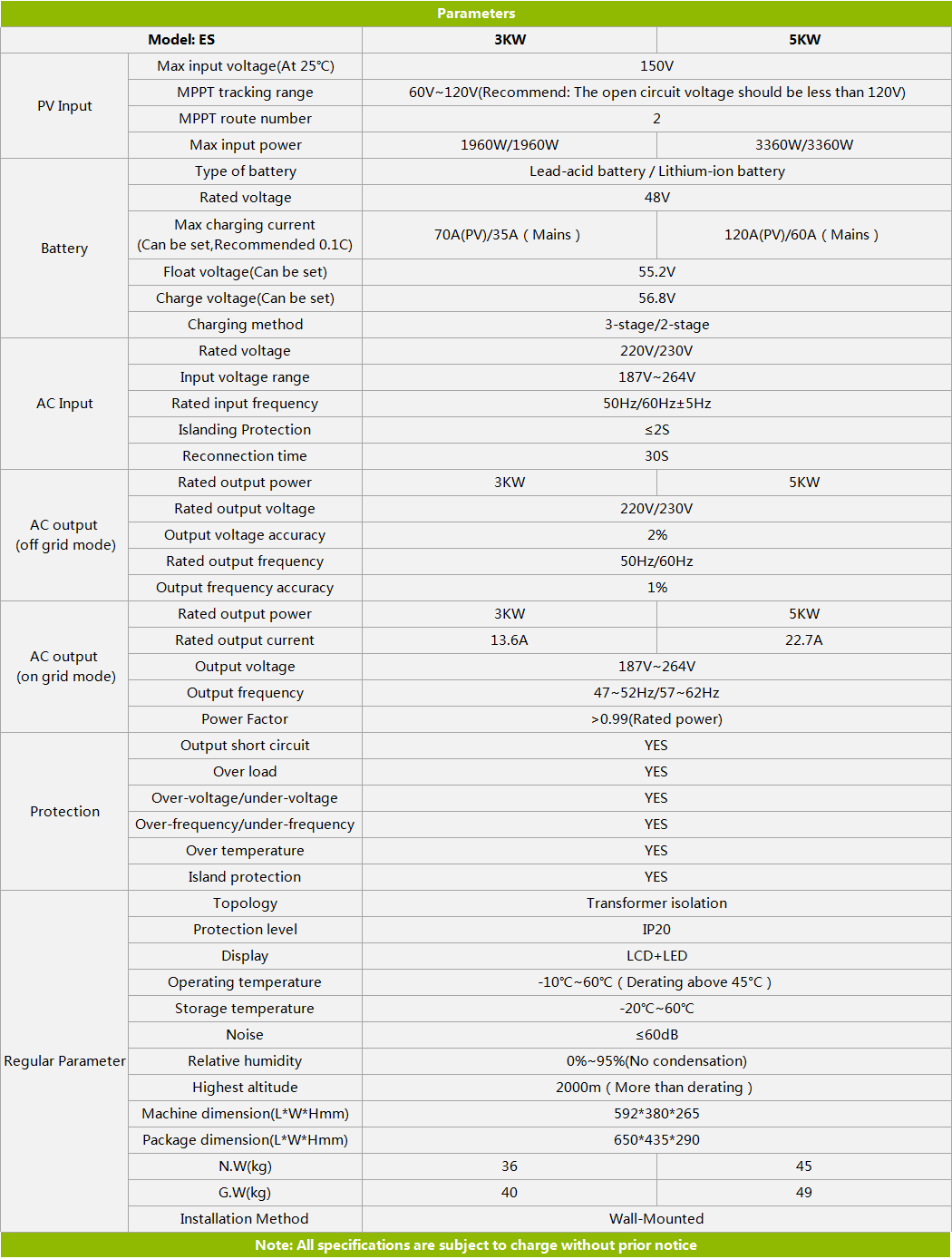
Inverter in Solar Power System

AC Modes:
1 When the mains power is normal and the current solar power generation is bigger than the load power, solar power will feed the load completely and the surplus solar power will feed the battery and transmit to the grid.
2 When mains supply is normal and the solar power is smaller than the load power, the insufficient part is supplemented by the mains supply; The solar and the mains supply feed the load together.
3 When mains supply is abnormal, the inverter changes to independent invert mode. When the solar power is bigger than the load power, the solar power will feed the load completely, and the surplus part will charge the battery. When the solar power is smaller than the load power, the insufficient part is supplemented by the battery; the batteries and the solar feed the load together.
4 When solar has no generating power, the mains supply will charge and store energy to the battery through the inverter.
5 When mains supply is abnormal and there is no solar, batteries will feed the load.
Battery Modes:
1 When the mains power is normal and the current solar power generation is bigger than the load power, solar power will feed the load completely and the surplus solar power will feed the battery and transmit to the grid.
2 When the solar power is smaller than the load power, the insufficient part is supplemented by the battery. The solar and the battery will feed the load together.
3 When solar power runs out or very little and the battery is placed to below 48 voltage, the discharge power of the battery will be linearly reduced. The insufficient part will be supplemented by mains supply. And when it reaches the low-voltage protection of the battery, the load will be completely fed by the mains supply .
4 When mains supply is abnormal, the inverter will work in the independent invert mode. The solar power will feed the load. And if the solar power is insufficient, it is supplemented by the battery.
Note: under the BATT mode, if there is no solar, mains supply won’t charge the battery.
Peak-cutting and Valley-filling of power-using Mode (This mode needs to work in battery priority mode)
This mode is suitable for the areas which have peak and valley electricity price. According to the electricity price in different periods, the corresponding time can be set to charge and discharge from the grid.
1 When the electricity price is low, mains supply charges the batteries;
2 When the electricity price is high, the batteries feed the loads.

|



